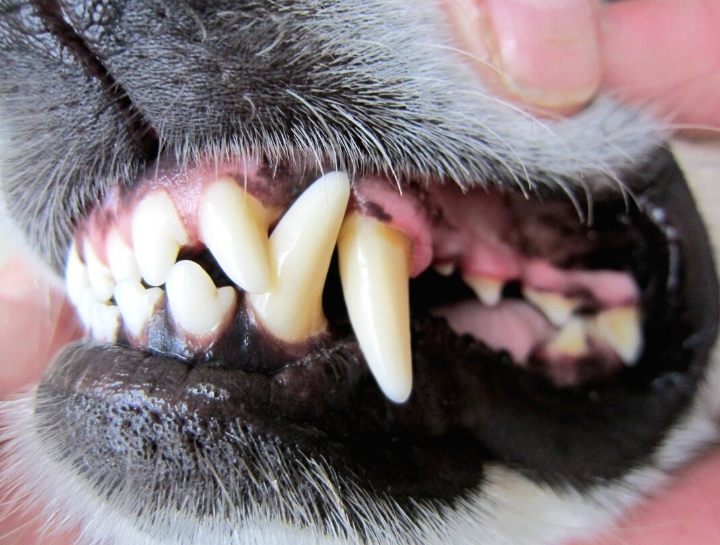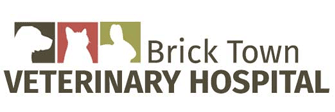The Importance of Pet Dental Care

Teeth. They need them for their very survival in the wild. But did you know that (according to the American Veterinary Dental Society) more than 85% of our pet dogs and cats have dental health issues by the age of three? And that these dental issues have been potentially linked to heart, kidney, and liver disease, as well as other health problems?
Why care about your pet's dental hygiene?
Dental disease starts with bacteria. The food that is eaten develops into plaque. Dental plaque, whitish to greyish in color, is slippery material which forms near the gum line. Plaque is made up of food particles, organic material, and bacteria. The bacteria feed on the food particles and, in so doing, produce toxic acidic wastes. These acidic wastes cause gingivitis (inflammation of the gum tissue), and periodontal disease (inflammation of the structures suspending the tooth in its socket).
At first, the toxic acidic wastes cause the gums to redden and become swollen. More plaque forms and the wastes dissolve away the ligament holding the tooth in the socket, creating a periodontal pocket. As plaque extends along the tooth root, the plaque nearer the crown becomes mineralized and is referred to as tartar. Tartar ranges from yellow to brown in color, is hard, and adheres tightly to the surface of the tooth. Eventually the ligament breaks down further and the tooth loosens in the socket.
Similarly, dental caries or cavities develop when the toxic acidic wastes dissolve away a layer of enamel. The bacteria can then eventually spread throughout the tooth and destroy it. Sometimes a tooth is worn (flattened) or fractured and bacteria can enter the inside of the tooth, infecting it. A tooth abscess (pocket of infection associated with the tooth) can form, causing bacteria to spread throughout the bloodstream, potentially affecting the internal organs. (Eighty-five % of abscessed teeth go completely unnoticed by the pet owner.) At this point, only tooth extraction will curtail the problem.
Who should receive a dental cleaning or procedure?
Any dog or cat with the following should receive dental treatment under anesthesia:
- Reddened or inflamed gum tissue, especially along the chewing teeth in the back of the mouth,
- Grey or brownish deposits, especially on the chewing teeth, and/or
- Unpleasant or foul odor to the breath.
Signs of advanced dental disease might also include discharge from the nostrils or mouth, pawing at the mouth, lip licking, tongue thrusting, oral pain, and excessive salivation. Delaying appropriate dental care at this stage will fail to halt the progression of the dental disease and potential complications affecting the heart, kidney, and liver.
How are dental cleaning procedures performed?
Initially a dental cleaning is recommended. This involves the use of hand instruments and ultrasonic scalers utilizing high frequency sound waves which are emitted along with a steady spray of water from a hand piece, and polishing with a dental pumice. Dental “X-rays” may be taken to assess the health of the tooth roots. In addition, pets affected with dental disease may benefit from periodontics (root cleaning/ gum procedures), endodontics (root canals), restorative dentistry (fillings, sealants), and extractions where necessary.
Invariably, a pet requiring a dental procedure receives an anesthetic involving a brief stay in the hospital. Pre-anesthetic blood testing is required for all patients. Some pets may require additional tests (such as heart testing) in order to enhance the safety of the procedure. Fortunately, modern anesthetic agents used by veterinarians today help to minimize the concern over the use of anesthesia.
What about “anesthesia-free dentistry?"
The teeth that you see in your pet’s mouth account for only one-third of the picture. Two-thirds of the tooth surface resides under the gum line, which is impossible to assess and fully address without the use of an anesthetic. It is like getting a haircut on only one-third of your head. Vulnerable tooth surfaces are left untreated and allowed to fester with bacteria, causing further progression of the dental disease. The American Veterinary Dental College states that “Access... (under the gum line) of every tooth is impossible in an unanesthetized canine or feline patient. Removal of dental tartar on (only) the visible surfaces of the teeth has little effect on a pet’s health, and provides a false sense of accomplishment. The effect is purely cosmetic.”
How is dental disease prevented?
The best measure to prevent dental disease once the teeth have been professionally addressed is to keep them clean. This is accomplished through dental diets, avoiding table scraps or soft dog food, and by brushing the teeth. Most pets will tolerate brushing of the teeth if approached gradually and consistently (at least every other day). The technique for brushing your pet’s teeth is as follows:
- Keep sessions limited to one minute each at the same time and place daily.
- Start by getting your pet used to having something placed in the mouth. Place your finger (unless your pet is a biter!), dipped in warm water, or warm diluted bouillon, inside the cheek and along the outer surfaces of the teeth. Follow with praise and reward.
- Once your pet has accepted the procedure, progress to a dampened gauze pad wrapped around your finger. Gently sweep across the outer surfaces of each tooth. Follow with praise. Continue daily until your pet accepts this with little objection.
- Moisten a pet toothbrush with pet toothpaste (available through your veterinarian). The cheek should be gently pulled away from the teeth and the brush inserted at a 45-degree angle between tooth and cheek. Concentrate on the area where tooth meets gum using short, gentle strokes over the external surfaces, especially the cheek teeth in the back of the mouth. Praise your pet during and after each session.
Where can my pet receive dental care?
The best place for your dog or cat to receive thorough and effective dental care is through your family veterinarian at the Brick Town Veterinary Hospital.
Make that bacteria-laden smelly breath a thing of the past! Come celebrate your pet’s smile with us. See your dog or cat happier and healthier in the New Year and they will gladly thank you for it!
About the Author
Debra A. Fiorito, DVM, FAVD, DAVDC, graduated from Cook College, Rutgers University in 1979 and then Purdue University School of Veterinary Medicine, earning a DVM degree. She has authored case reports and articles in various professional journals, including Canine Practice, Veterinary Practice Staff, The Compendium and Journal of Veterinary Dentistry.
